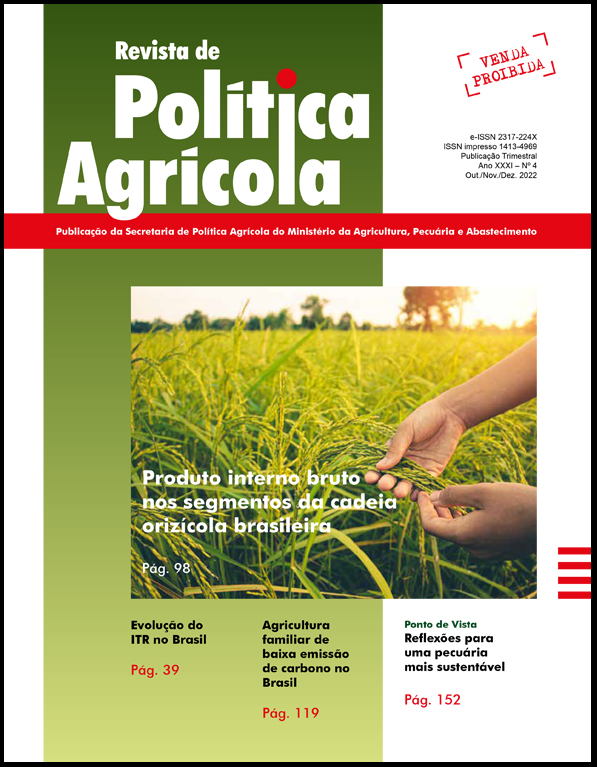Efficiency of the agricultural production in the municipalities of Paraná: an analysis by area classes
Keywords:
Agricultural Census 2017, DEA, ParanáAbstract
The objective of this article was to measure the technical efficiency of agriculture in the municipalities of Paraná state, Brazil, according to area classes. The data envelopment analysis (DEA) methodology was used, and the data from the 2017 Agricultural Census were grouped into 9 area classes. Efficient farms were found for all classes; however representative farms classified as medium and low average inefficiency predominate in Paraná. The average efficiency scores indicate that the farms have the potential to reduce the inputs and remain with the same production. The percentage of potential reduction of the inputs varied between 23.6% (for the class of 5 ha to less than 10 ha) to 43.6% (for class from 500 ha to less than 1,000 ha). The highest efficiency score averages are in the 5 ha to less than 10 ha area class, and the lowest averages are in the 500 ha to less than 1,000 ha area class. The Curitiba Metropolitan Area, South Center and Eastern Center mesoregions had the highest average of efficiency scores; in addition, the Northwest stood out for some classes.Downloads
Published
2022-12-22
How to Cite
Mattei, T. S., Cattelan, R., & Staduto, J. A. R. (2022). Efficiency of the agricultural production in the municipalities of Paraná: an analysis by area classes. Revista De Política Agrícola, 31(4), 8. Retrieved from https://rpa.sede.embrapa.br/RPA/article/view/1735
Issue
Section
Artigos Científicos


